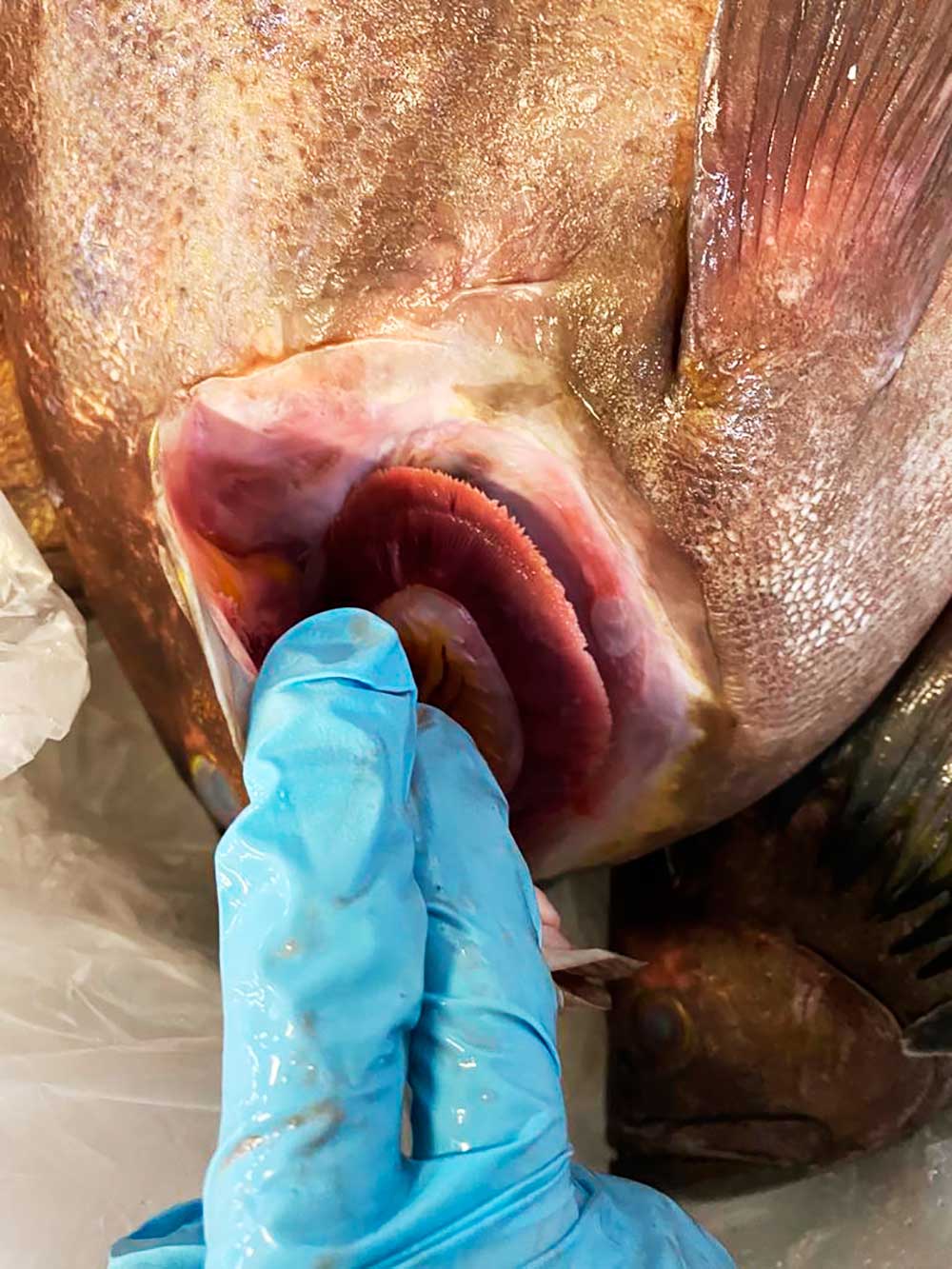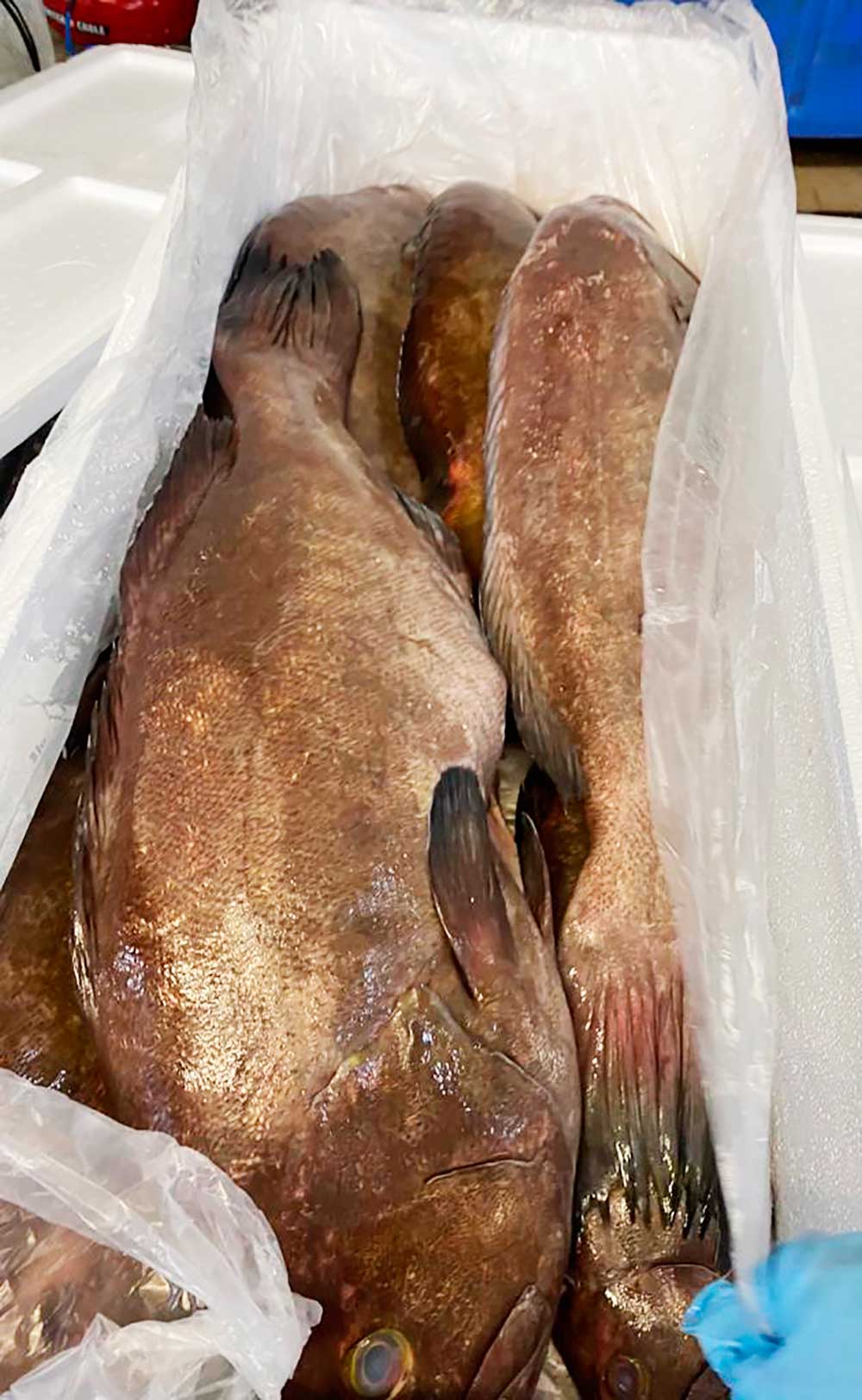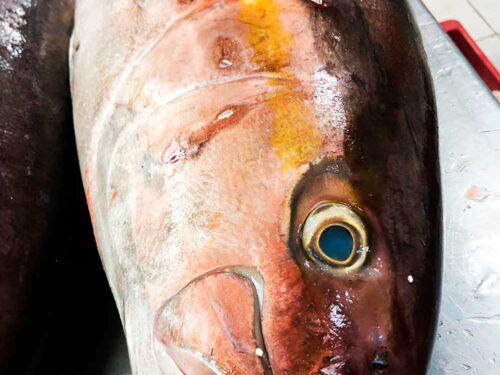Description
There are three different fish which are known as Grouper in the US market; the Red Grouper, (True) Black Grouper, and Gag which the market commonly calls Black Grouper.
The black grouper (Mycteroperca bonaci) is usually found in the Western and South Atlantic regions, South America, Florida, and the Gulf Of Mexico. True Black Grouper is hard to come by. Both True Black Grouper and Gag have a higher yield and firmer texture than Red Grouper.
Red, Black and Gag Grouper are the predominant groupers sold to US markets and are found from the mid-Atlantic States down through the Gulf of Mexico and both coasts of South America.
Groupers in general have big heads, large mouths and heavy, stout bodies. They are not distance swimmers but prefer to dwell in bottom structures such as rock protrusions and reefs. They also use their powerful gills to create small caves for themselves to inhabit.
Biology
A solitary species inhabiting rocky and coral reefs (Ref. 9710). Adults feed primarily on fishes; juveniles mainly on crustaceans. Oviparous (Ref. 205). A protogynous hermaphrodite (Ref. 55367). Forms spawning aggregations (Ref. 55367). Common but difficult to approach (Ref. 9710). Marketed fresh and its flesh is of excellent quality.
Edge of preopercle smooth, without pronounced lobe at angle; 17-24 total gill rakers; depth of body 3.3-3.5 times in SL; head length 2.5-2.8 times in SL; evenly rounded preopercle, without distinct notch or lobe at the angle; subequal sizes of anterior and posterior nostrils.
These fish feed on smaller reef fish like herrings, grunts, and snappers. They also feed on crustaceans. Black groupers have a long lifespan, they live for around 30 years.
The black grouper has a protruding lower jaw along with an oblong body. It has a squared-off caudal fin and rounded margins on both the anal fin as well as the dorsal fin. It has an olive or gray body and small hexagonal brassy spots on its head. It also has rectangular blotches on its body. It has 11 spines and 15-17 rays on the dorsal fin.
The dorsal, anal, and caudal fins have soft bluish or black borders, and they might have an orange edge on their pectoral fins. They have strong and excellent front teeth. These slender teeth are used as raspers, and it uses these teeth to prevent small fish from escaping instead of using them to tear flesh. They look spooky to humans because of their rectangular blotches and hexagonal brassy spots.
The black grouper size limit is about 28-59 in (70-150 cm) in size. It is a medium-sized fish that preys on small reef fish or shrimps. Though they are almost the same size as a great barracuda, they still get eaten by them.
A black grouper weighs around 125-179 lb (56.6-81.1 kg). This fish is quite heavy and big, because of which many people catch them while fishing. A fishery catching them for commercial purposes is a very common event.
Fresh Black Grouper is a member of the serranidae family which also includes sea bass. Side body has rectangular dark gray blotches. Outer third of second dorsal, anal and caudal fins black.
Life cycle and mating
A monandric species. According to a study in Campeche Bank, females changed sex between 33.4 inches and 49.1 inches, with median length of 40.4 inches. At 44.8 inches, 50% of the females in the sample had transformed into males. Age at sex change = 15.5 years.Size / Weight / Age
- Maturity: Lm 26.40 inches, range 18.33 in – 37.08 inches
- Max length: 58.5 inches TL male/unsexed; common length: 27,3 inches TL male/unsexed;
- Max. published weight: 220 lbs.
Distribution
Year-round in Brazil. Western Atlantic: Bermuda and Massachusetts, USA to southern Brazil, including the southern Gulf of Mexico and the Caribbean. Adults are unknown from the northeastern coast of the USA.
Black grouper comprises about 70% of the U.S. grouper harvest and is therefore the most commonly found grouper in the market place with an average market size of between 10 – 20 lbs for whole fish.
There are seasonal closures from January through April in the South Atlantic and from February through April in the U.S Caribbean.
Culinary profile:
The black grouper has a mild but distinct flavor, somewhere between bass and halibut. Gag is sometimes mistakenly referred to as black grouper in the market. The two species are very similar in taste and texture.
Grouper is a lean, moist fish with a distinctive yet mild flavor, large flakes and a firm texture. The Red Grouper has a slightly sweeter, milder flavor than the Black Grouper and is considered to be the better of the two. Grouper’s flavor profile is like a cross between Bass and Halibut. Even though it is lean, this fish is forgiving during cooking and can be rather difficult to “over cook” in the sense of drying out.
South Atlantic catch these fish for commercial purposes and consumption because of the famous mild and unique taste of the black grouper.
Black grouper videos
Black grouper articles
Black grouper – nutrition facts:
Serving size: 3 ounces
Calories: 92
Protein: 19.38 grams
Total fat: 1.02 grams
Saturated fatty acids> 0.233 grams
Cabohydrates: 0 grams
Sugars: 0 grams
Fibers: 0 grams
Cholesterol: 37 grams
Selenium: 36.5 mcg
Selenium: 53 mg







Reviews
There are no reviews yet.